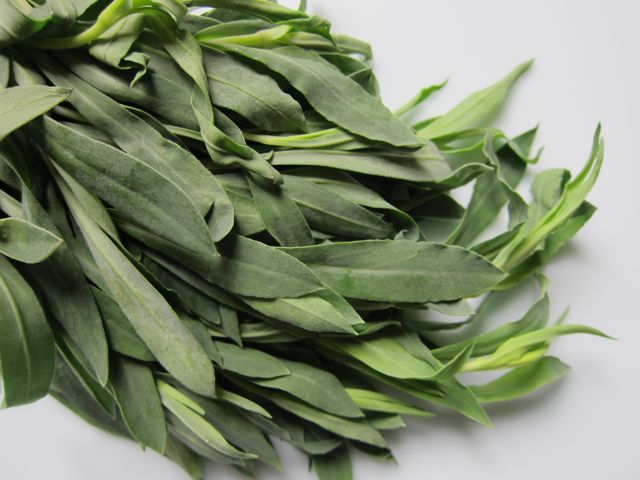
Last week I went foraging for wild asparagus, like I do every spring at our house in Umbria. I love the idea of foraging, but in reality I’m not very good at it. I wish I was better, and it is definitely near the top of my list of things I want to do. You know. “Spend week in Umbria following farmer neighbor around fields while she’s picking greens.”
Somehow it never happens. Which is why I’m stuck on asparagus. Even though they are hard to spot, at least when you do find them, they look like asparagus. The other greens that grow wild in Umbria are another story. They all look the same to me.
My friend Carol brought a big basket of dandelion greens to dinner last year, which she dressed with a hot pancetta and balsamic dressing. They were divine. But when my friend Jane and I hit the field the next day – with a few leaves we had kept out of the salad in hand – we just couldn’t figure out what was what. Everything either looked exactly like what we were looking for, or else nothing did. We were totally confused. We ended up picking something, and we did eat it. But was it dandelion greens? Who knows.
While I’ll happily leave the porcini and truffle hunting to others who know what they are doing (and have cute little dogs to help them) I feel that deep down I should be able to head out in to the fields and woods and rustle up a mess-o-greens. Chicory, dandelion greens and especially strigoli.
Strigoli are one of those things that turn up on almost all Umbrian menus, but no where else. Not in other regions, and never, ever in stores. They are a wild herb/green that is used in Umbria to flavor pasta sauces. I always order it when I see it on the menu and when I ask the restaurant owner where they come from he usually mumbles something like “oh, my mother picked them this morning.” Not a lot of help.
Well, I am proud to announce that the other day I managed – finally – to forage some strigoli on my own! Yes, I was in a vegetable store in Todi. And yes, by foraging I mean I pointed to some bunches of greens and asked “What are those.” (even in their gathered state I couldn’t differentiate them from sorrel.) But I found them all on my own. In a crate. On a shelf. Does that count?
Back in Rome with two bunches of strigoli I had to decide what to do with them. The store owner had suggested a frittata. Tasting the greens, they were slightly bitter, and just bit sour and spicy. Sort of like sorrel meets arugula. So I decided to use them to add a bit of Umbrian flavor to Cacio e Pepe. I added the cut up strigoli at the last minute, letting the heat of the pasta just barely wilt the greens.
I know you probably won’t be able to find strigoli, so feel free to substitute a couple of bunches of arugula.
My friend Carol is coming for dinner tonight and since it’s spring I’m hoping she’ll arrive with the dandelions again. If not, I guess I’ll try and hit the fields again tomorrow. 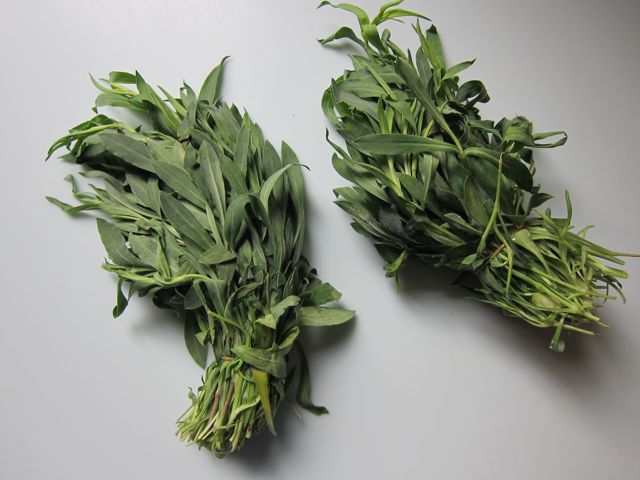
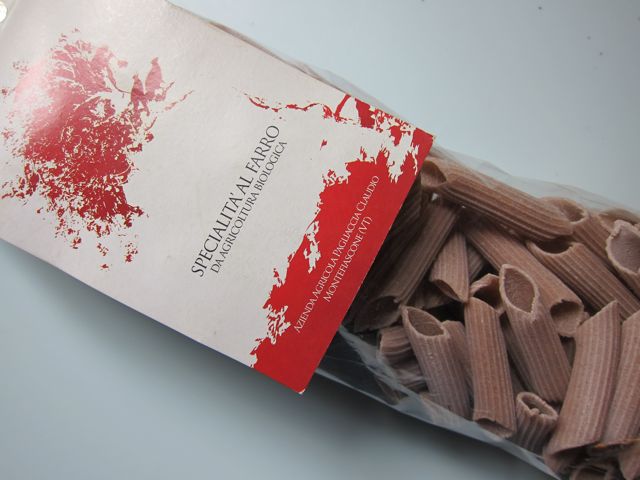
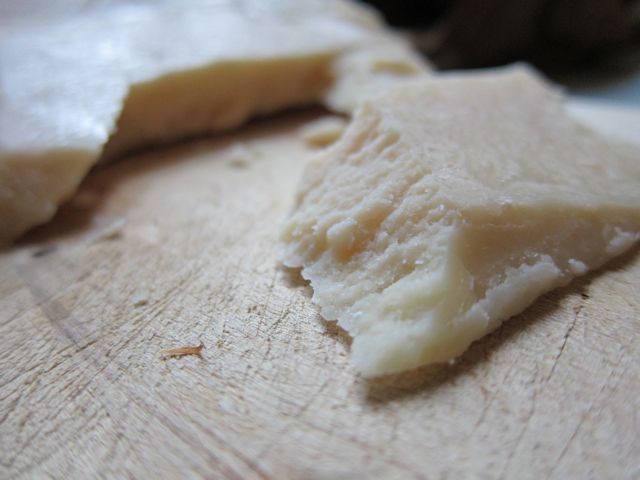
Cacio e Pepe with Strigoli
serves 5-6
1/2 kilo (1 pound) pasta*
1 1/2 cups grated cheese**
2 tablespoons freshly ground pepper (or more to taste)
2 bunches strigoli (or arugula), washed and chopped roughly
Bring large pot of salted water to boil. Add pasta and cook until al dente.
Drain the pasta, reserving 1.5 cups of the pasta water.
Place pasta in large, heated bowl. Sprinkle on half cup cheese and start to toss, adding 1/4 cup pasta water. Mix well, adding pepper and the rest of the cheese and as much water as you need to keep it all moist. You don’t want it watery, but you do want it creamy. Quickly mix in the greens, distributing them well.
*I used whole wheat farro penne. If you can get a good quality whole wheat pasta, I think it works well with this dish.
*Ideally you should use a hard grating pecorino. In a pinch, you can use parmesan, but it will have a different taste. Sweeter, less strong. I used a hard cheese that is 50% goat ad 50% cow. The trick is to find a cheese that is hard and high fat content so that it melts without clumping. 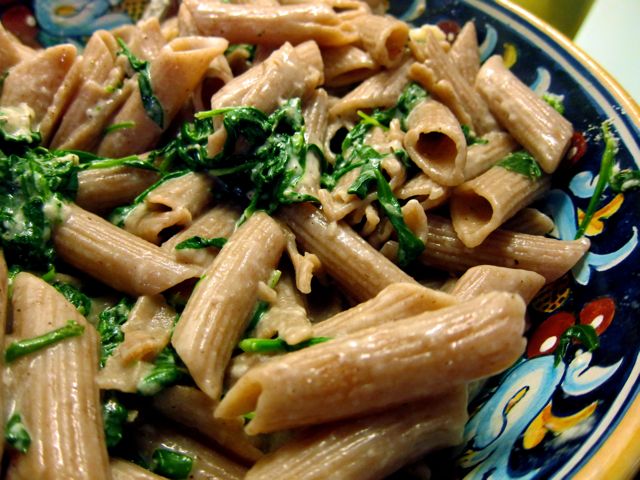
Amazing. i’d never heard of them (let alone seen these).
If the taste is similar to sorrel, then you could also make soup with them.
I’m heading down to the vegetable store where I found them last week. If they have them again, might try soup! Was also thinking some version of pesto.
Can you also please forage for the botanical name? I’m sure they must exist elsewhere (like in the Cortona mountains?) but under another name–and of course they wouldn’t be as tasty as the ones from Umbria. How curious! Now I’m going to go forage on my own. Will let you know when (if) I find something.
This seems like a great way to use them. Up here in Piemonte, these are called Kujet in dialect. No one seems to know what they are called in Italian. Whatever they are called I call them delicious.
Here is what I found: STRIGOLI
Altri nomi volgari (common names)
Bubbolini, Schioppettine, Schioppetti, Verzuli, Erba del cucco, Crepaterra, Mazzettone minuto.
Botanical names:
Silene vulgaris (Moench.) Garcke ssp. angustifolia (Miller) Hayek
I think, as a few people have pointed out, they are called differnt things in different regions. Let me know if you find out any other names!
I’ve never heard of them here in Ciociaria. I’ll show my friends the photo and see if they have a word for them… Looks delicious!
The botanical name is Silene Vulgaris. Wikipedia entry (in Italian only: http://it.wikipedia.org/wiki/Silene_vulgaris )
We found strigoli in the market at Cesenatico, on the coast. The woman at the market said to put in in an onion and tomato sauce. Turned out great.
Sounds yummy! Hoping to find some in Umbria this week. It’s sort of late in the season, but with all this cold rainy weather, I’m hopeful.
It’s not true that Strigoli are available only in Umbria region.
I am from Iseo lake, Lombardy region, and it’s a very typical ingredient also by us.
It’s true that they are not sold but people pick them up in the fields. By us they are called “verzulì”, in local dialect 🙂 we use to make risotto or more often soup with it, they are very good 🙂
Thank you!! Very good information to know!